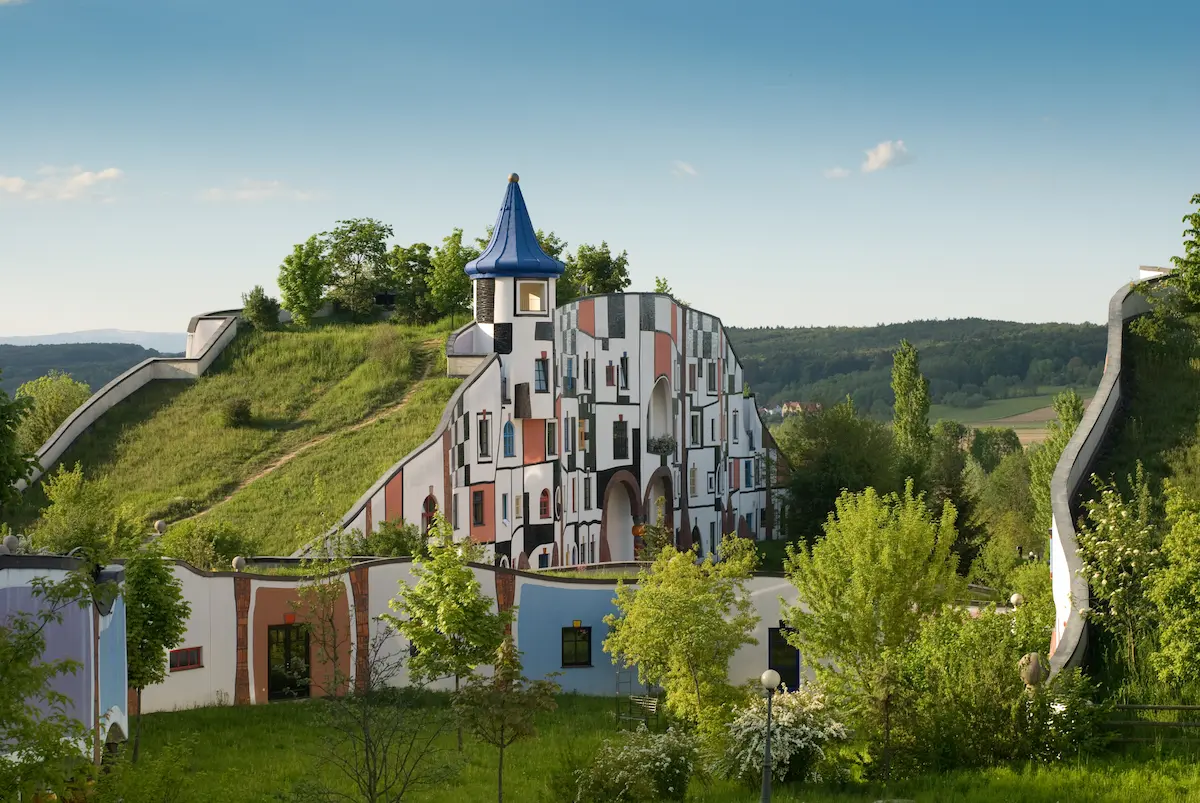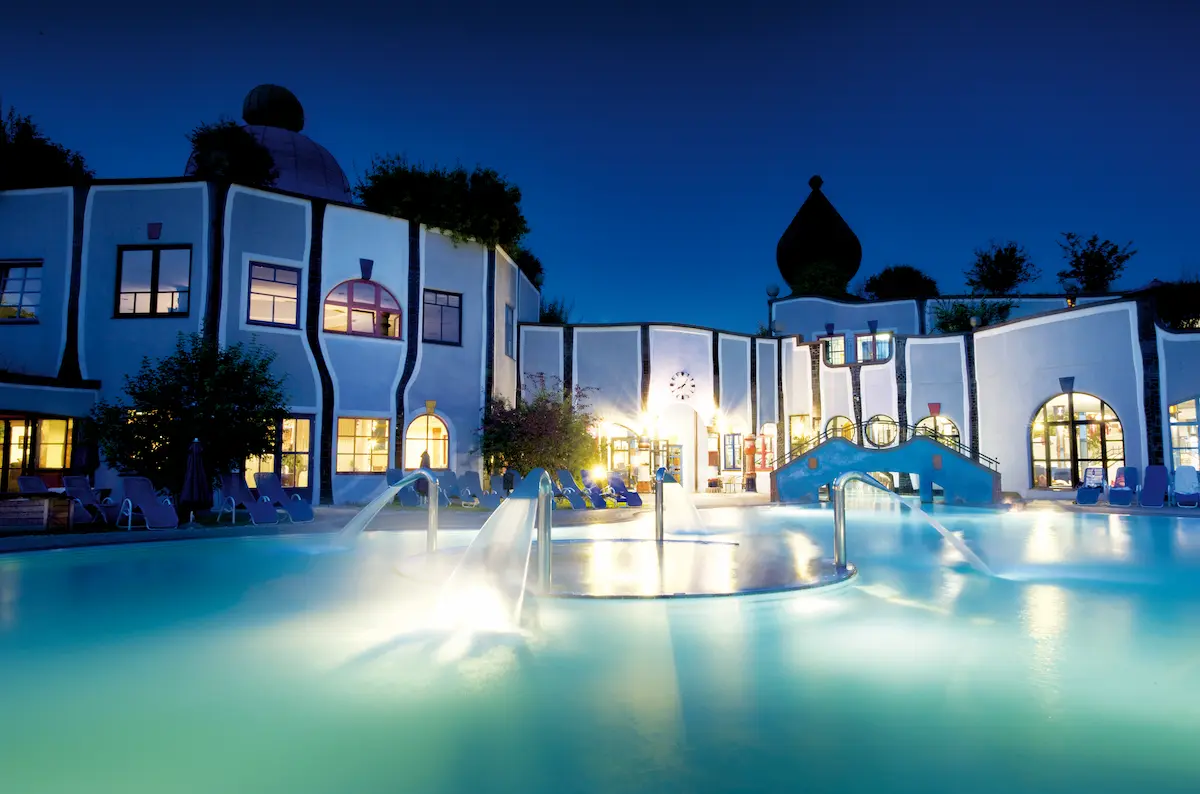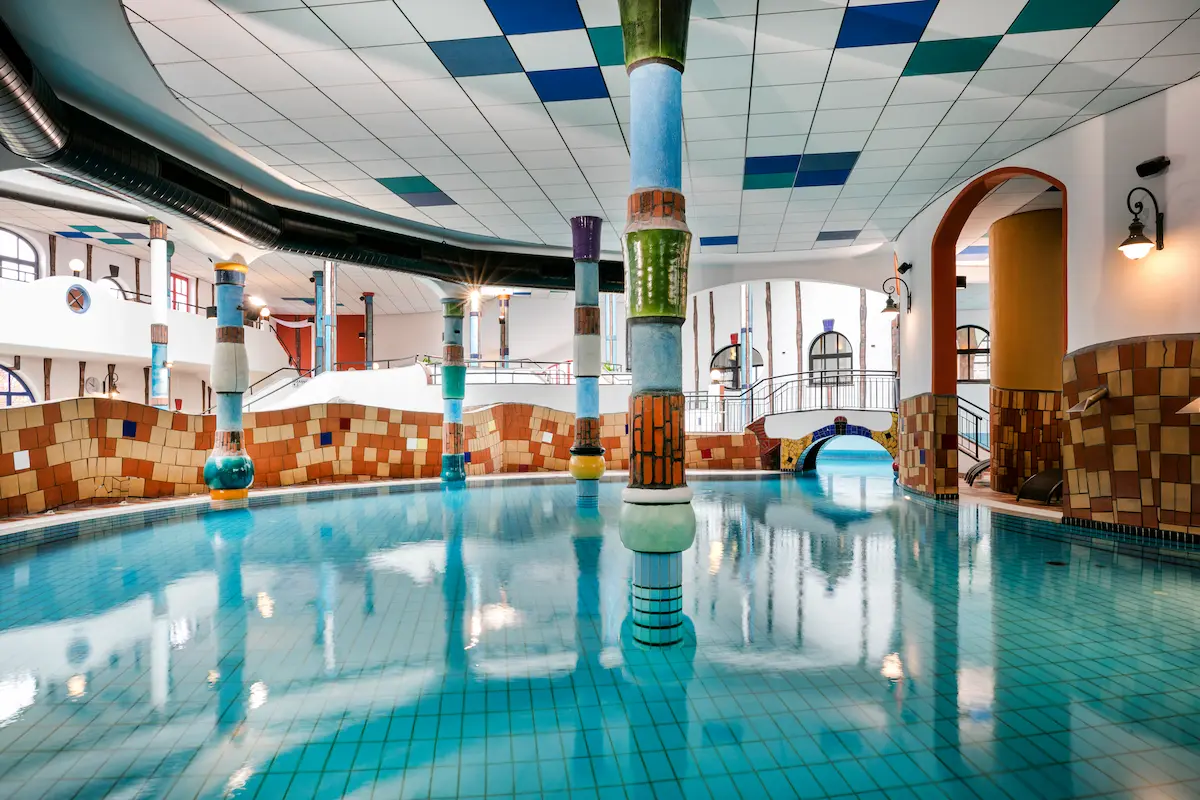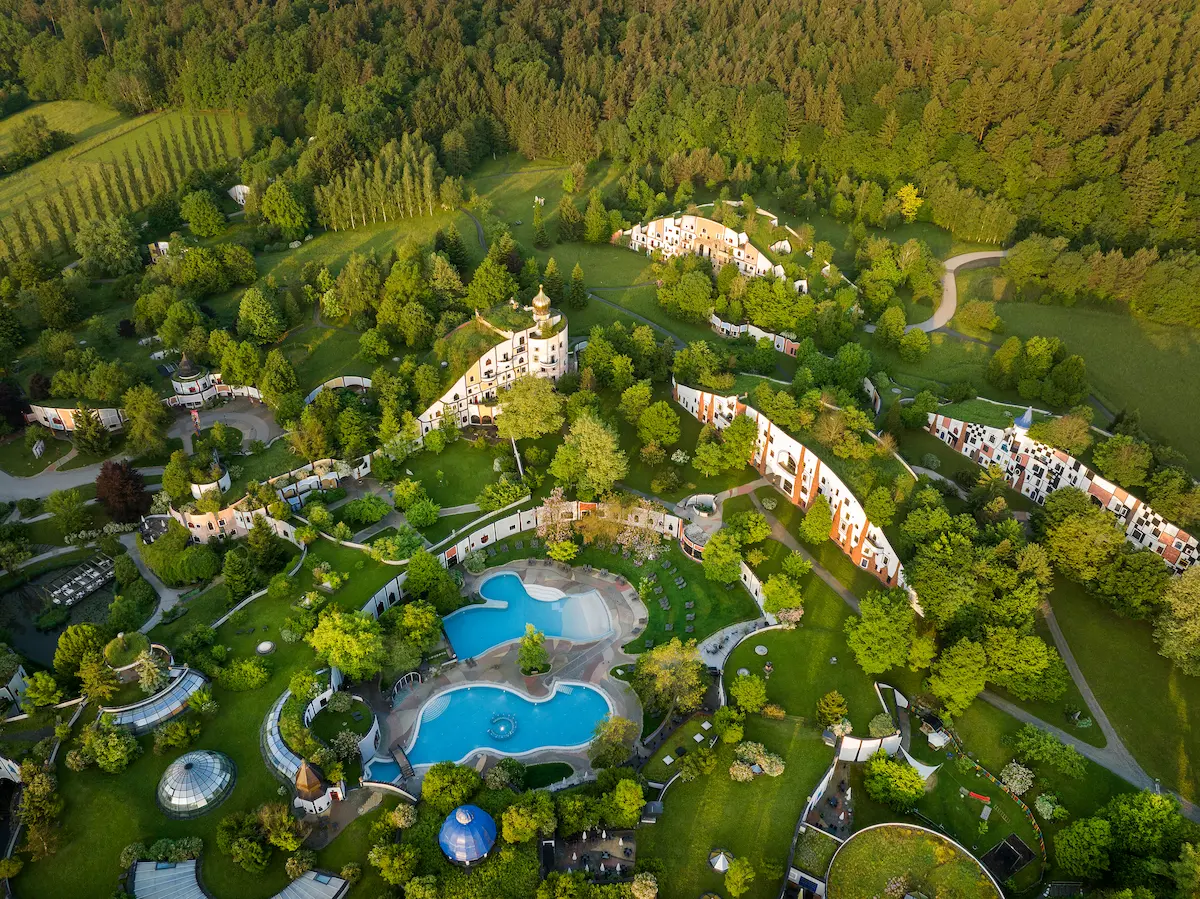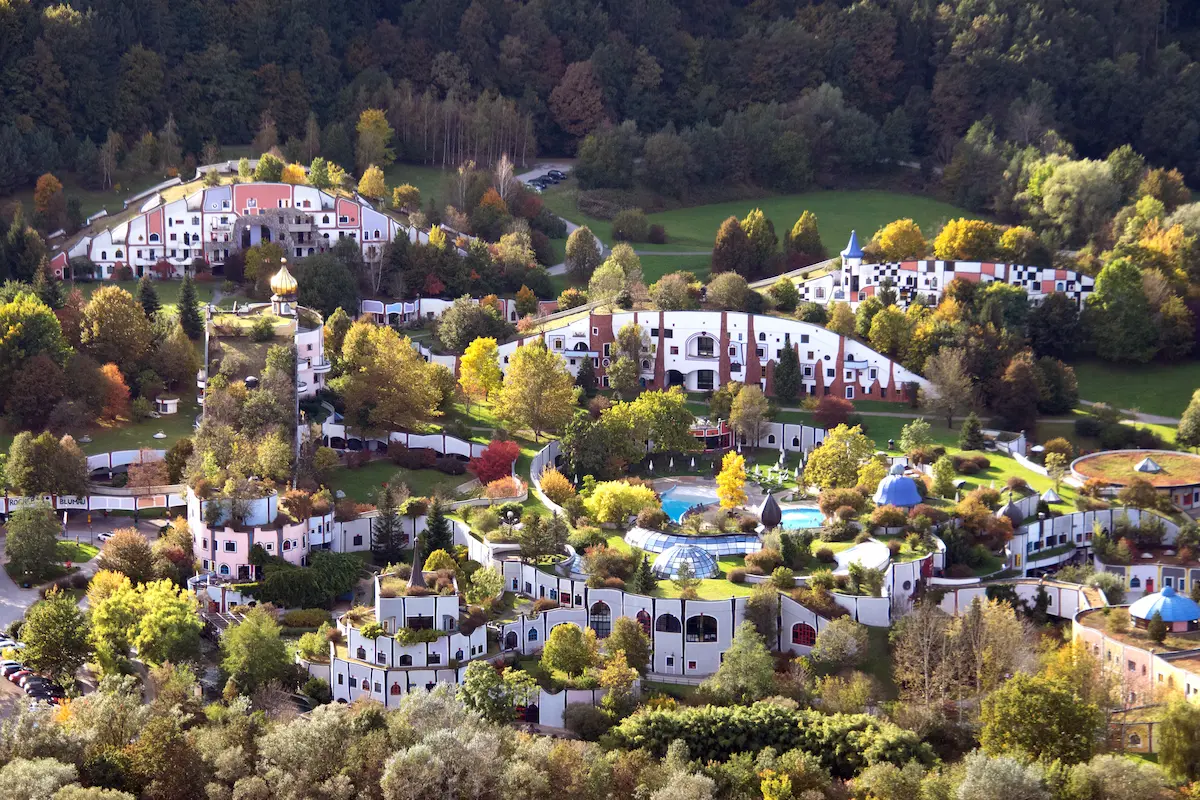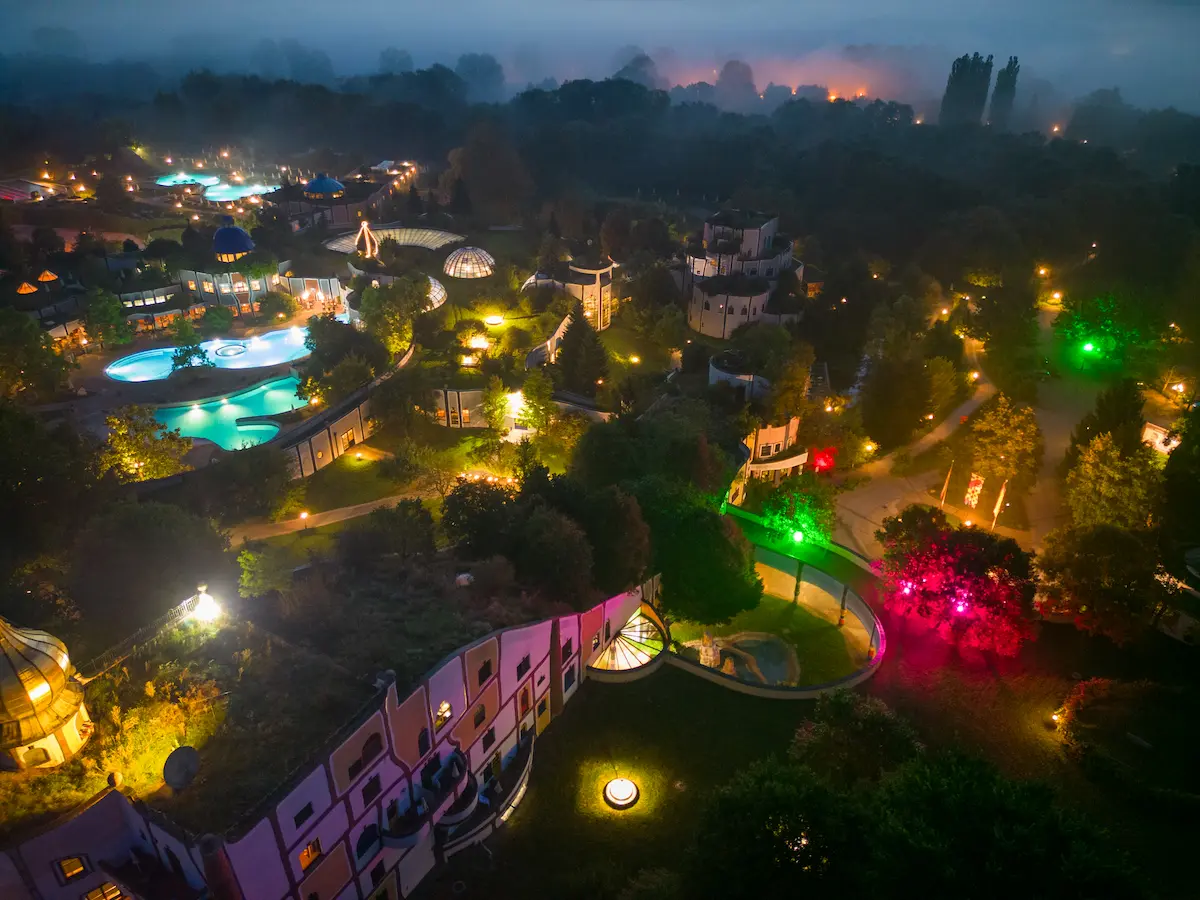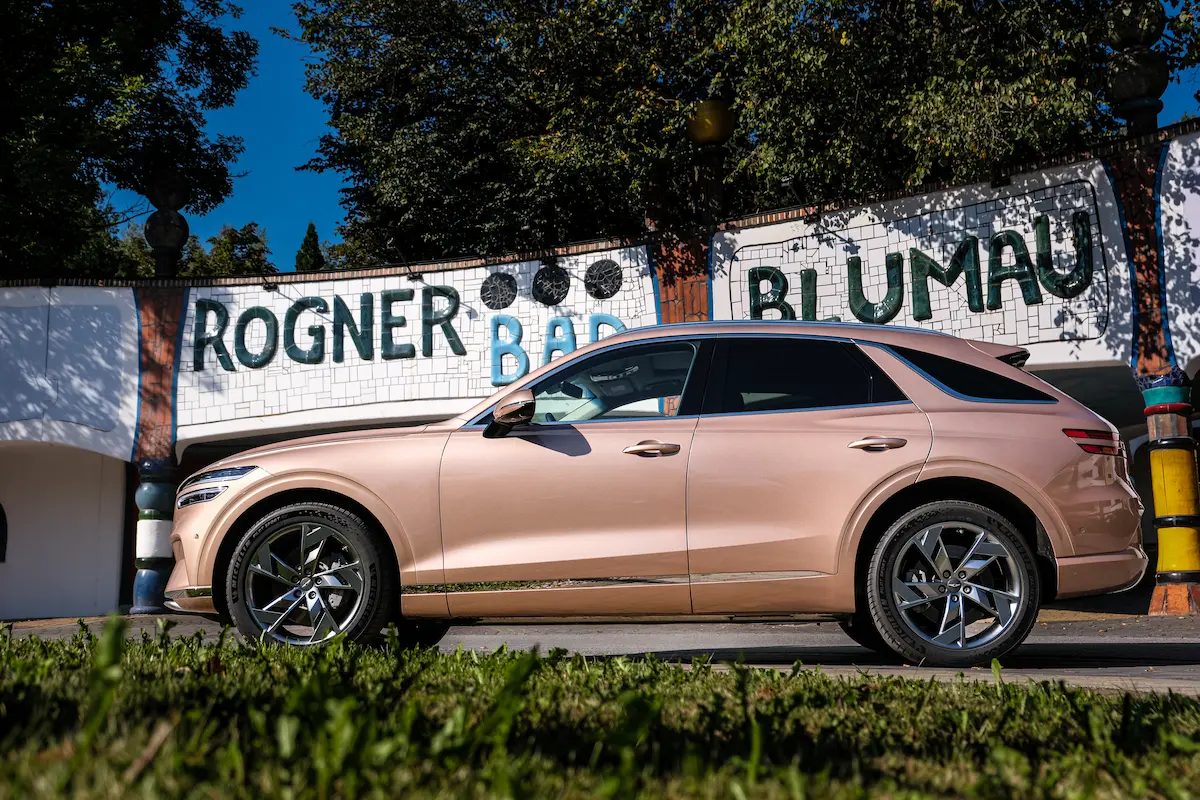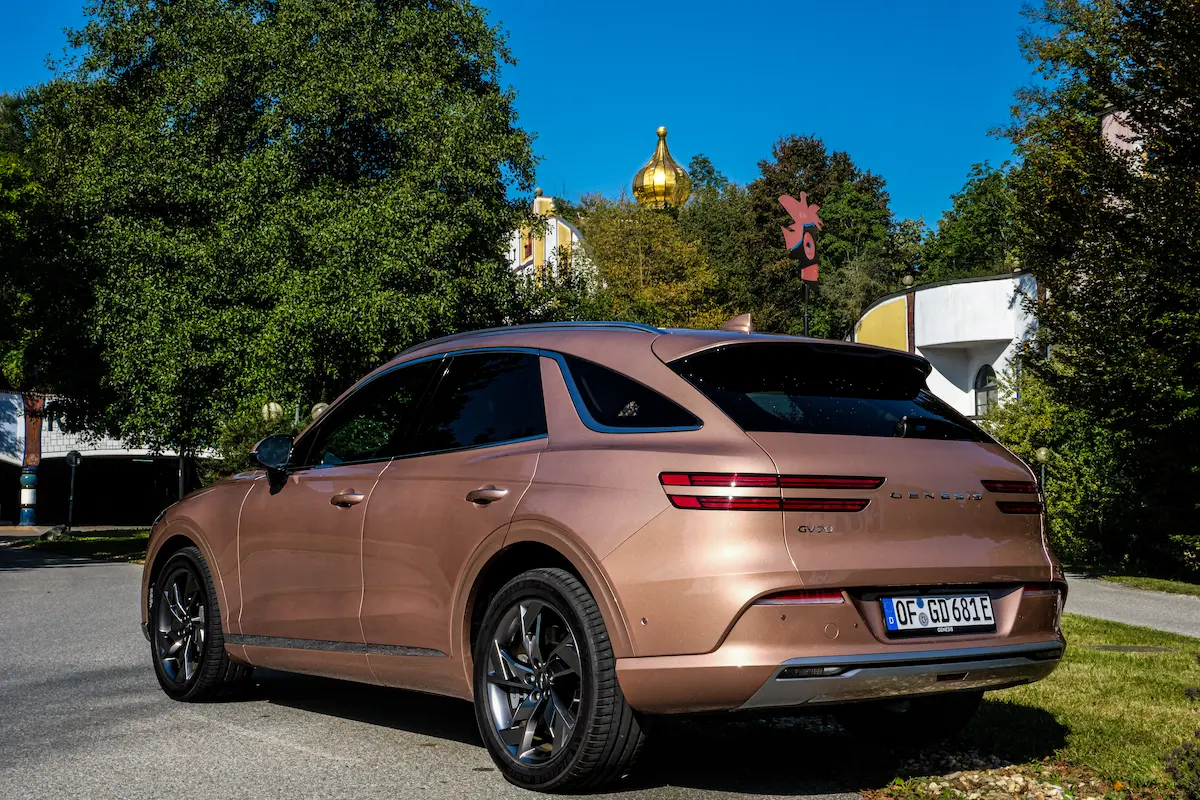The word ‘fateful’ should be used with caution, but it was certainly a happy coincidence when the building contractor Robert Rogner and the well-known Austrian artist Friedensreich Hundertwasser met at a party at Schönbrunn Palace in Vienna in January 1992. Their dinner conversation formed the starting point for a creative process that culminated in the realisation of an ambitious vision: the unique Rogner Bad Blumau wellness oasis in the East Styrian thermal spa and volcano region.
It is thanks to Rogner's extraordinary pioneering spirit and Hundertwasser's idea of a ‘new humanism’, in which nature and architecture combine to form an organic symbiosis, that a unique place for recreation and enjoyment has now been located for 26 years in a place where an oil well was originally sought - but in vain.
Instead of the hoped-for crude oil, ‘only’ hot water emerged from a depth of over 2800 metres, which, as it later turned out, also had healing effects. And so Robert Rogner planned bathing facilities that were to be flanked by a holiday village. All the plans had already been finalised down to the last detail when the master builder succumbed to the fascination of Hundertwasser's vision.
Today, guests seeking relaxation will find everything that makes a modern wellness temple on 420,000 square metres. What they will not find, however, are straight lines, right angles and edges, but organic shapes, cheerful colours and a place where landscape and architecture are combined and the nature of the hill country can be experienced directly.
The centre of the extensive area is formed by the ring-shaped indoor and spacious outdoor spa with a water surface area of over 3000 square metres. Various living, bathing and restaurant areas branch out from the centre into the open landscape.
Innovative energy generation
The thermal spa's unique geothermal concept is considered a flagship project as it utilises natural resources and possibilities in the best possible way. The 104°C hot water from the Vulkania® healing spring, which is extracted from a borehole, is first used to generate electricity, then flows to the energy centre, where the Rogner Bad Blumau heat exchangers are located, before being fed back into the earth via a borehole. The twelve tonnes of natural carbon dioxide produced per day are used in the bathing water treatment process to regulate the pH value. The rest goes to various industrial sectors in the form of carbon dioxide.
To generate electricity, steam is produced from hot Vulkania® water, which drives an electricity generator via a turbine. In this way, it is possible to produce a total of over 685,000 kWh of electricity per year. But that's not all: in future, a ground-mounted photovoltaic system will also ensure that the destination is completely self-sufficient in terms of energy. In addition, the charging facilities for electric guest vehicles will be gradually expanded. After generating electricity, the Vulkania® water still has a temperature of 85°C, making it possible to heat the entire facility even in winter. In the cold season, this means energy savings of up to 6,800 litres of heating oil per day, which corresponds to a saving of 4,500 tonnes of greenhouse gases.
The fact that the operators of Rogner Bad Blumau are always on the lookout for ways to optimise their holistic sustainability concept is demonstrated by the ‘Aquaponics’ pilot project, which will be launched in 2024. With the help of thermal water, the operators want to combine fish farming with the cultivation of herbs and vegetables.
Social responsibility and sustainability standards in all areas
Following the visionary Hundertwasser's guiding principle of the human scale, those responsible for the business understand sustainable business practices to include respectful treatment of nature, appreciation of employees and a relationship with partners that is characterised by fairness. These include in particular - mostly small-scale - farms from the surrounding area, which supply a significant proportion of the food, preferably in organic quality. Species-appropriate animal husbandry and the avoidance of chemicals and genetic engineering are a matter of course for all agricultural partners. In addition, Rogner Bad Blumau also cultivates its own land in accordance with organic farming guidelines. There are also numerous gardens across the 42 hectares of certified organic land, where pumpkins, marigolds, herbs and flowers are grown for use in the kitchen and spa. Orchard meadows not only provide unsprayed fruit, but also form valuable habitats for numerous animal and plant species.
The endeavour to steadily increase the proportion of organic products has meant, for example, that milk is now supplied by a nearby organic farm and guests have recently been able to enjoy organic coffee. The range of conventional soft drinks has also been replaced with certified organic products. The cuisine is not only regional, but also seasonal.
The staff in the spa area are also committed to sustainability and therefore only use exclusive natural cosmetics and handmade soaps. However, many of the small and large-scale eco-measures at the Rogner recreational oasis escape the guests' notice. This is in stark contrast to the most spectacular realisation of Hundertwasser's credo, namely the planting of all the roofs with trees and shrubs that originally grew on the site before it was built.
Rogner Bad Blumau is not only repeatedly voted Austria's favourite thermal spa, but has also been awarded the Austrian Ecolabel for tourism businesses from the very beginning. In view of the hotel's many sustainability initiatives and measures, this is a logical distinction.
Text: Peter
GrettPictures:
Lead image: Rogner Bad Blumau@Hundertwasser architectural project
Swimming pool: Rogner Bad Blumau@Hundertwasser architectural project
Outdoor pool: Rogner Bad Blumau@Hundertwasser architectural project
Picture 1 System from above during the day: Christian Thomaser
Picture 2 System from above during the day: Rogner Bad Blumau@Hundertwasser architectural project
System from above at night: Christian Thomaser
Pictures 1 + 2 Genesis Electrified GV 70: Foto Luttenberger

